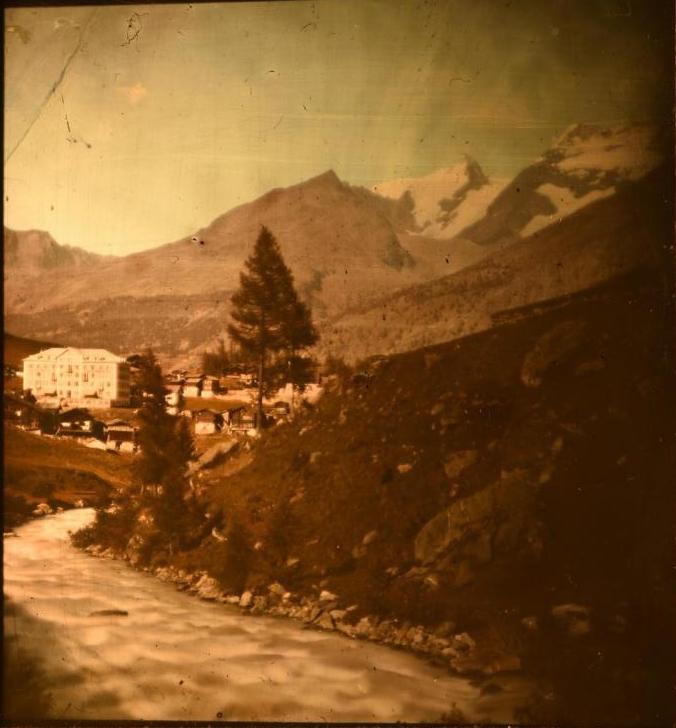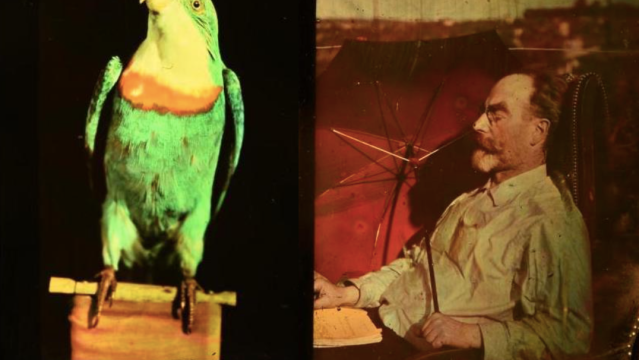Scientists have re-examined the creations of one of the earliest colour photographers, Gabriel Lippmann, who used no pigments or dyes of any kind in his work. They sought to identify the original colours captured in Lippmann’s photographs and recreate the images using a similar process to that of the 19th-century photographer. The paper was published in the Proceedings of the U.S. National Academy of Sciences.
“These are the earliest multi-spectral light measurements on record so we wondered whether it would be possible to accurately recreate the original light of these historical scenes,” said Gilles Baechler, a software engineer at the Swiss Federal Institute of Technology in Lausanne, in an institute press release, “but the way the photographs were constructed was very particular so we were also really interested in whether we could create digital copies and understand how the technique worked.”
Perhaps you’ve ogled at the serene blue of Abraham Lincoln’s suit in a seated portrait or the bouquet of reds and oranges sprouting from the Hindenburg as it fell, ablaze, to ground. These colourised images from history are just that — the pigment was added decades after the photographer’s capture of the moment. What makes Lippmann’s work different is that it was captured in colour, thanks to a process called the interference effect.
Lippmann made the discovery in 1891 and was awarded the Nobel Prize in Physics for his work in 1908. As Lippmann himself explained in his Nobel lecture, “The method is very simple. A plate is covered with a sensitive transparent layer that is even and grainless. This is placed in a holder containing mercury. During the take, the mercury touches the sensitive layer and forms a mirror. After exposure, the plate is developed by ordinary processes. After drying the colours appear, visible by reflection and now fixed.”

Because the colour in each photograph was dependent on chemical reactions, Lippmann’s method wasn’t as true to the real world as, say, what modern cameras can do. So while the blue skies and piquant still lifes from 19th-century Switzerland are probably closer than what a typical 21st-century colouriser can do, the current research team sought to better tune those tones to what they actually were.
They examined some of Lippmann’s photographic plates, loaned by the Musée de l’Elysée. They experimented on the plates, testing their ability to reproduce colours and looking at how light penetrated them.
“Although the reproduced light wasn’t the same as the original, we could design an algorithm that, given the distorted light seen when looking at a Lippmann photograph, would undo the distortions to reproduce the original light,” co-author Adam Scholefield, of the Swiss Federal Institute of Technology in Lausanne, said in an email. “In other words, although there are distortions, the original information is still there.”
The team also built a prototype digital camera that they hope will be able to replicate Lippmann’s interference-based approach, substituting the photochemical components with lasers. Like Lippmann’s device, the researchers’ camera will be multispectral, meaning it will have a richer, more accurate array of colours in the images it takes than typical cameras, which rely on taking photos in three spectra and averaging their sum to create the colour photo you see.
